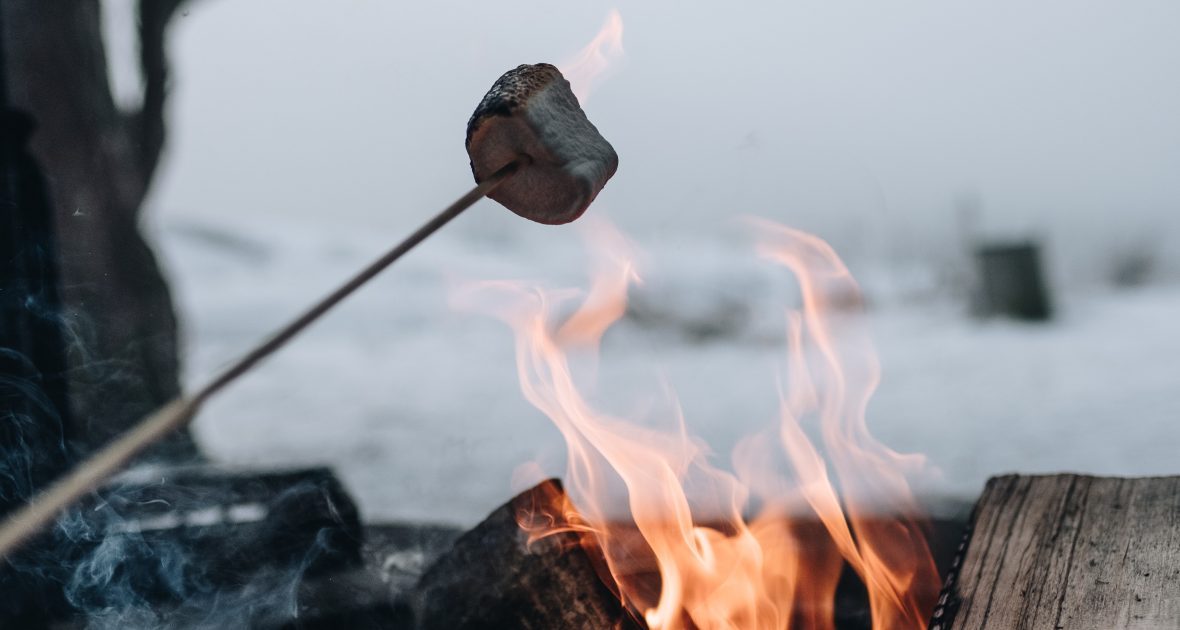written by Karina
Breaking out the Good Glasses
A few weeks ago, we had a friend over for a socially-distanced bonfire and dinner. We hung up string lights, shoveled out the patio, and brought out every blanket we could find. We’ve done this plenty of times over the winter to assuage our feelings of social starvation.
But this time, we also decided to bring out the good wine glasses. This particular friend knows wine, and we figured that just because we were clutching our glasses with mitted hands and peering out through icicle-laden parka hoods didn’t mean we couldn’t drink well. The pairing of the night was homemade Gochujang-marinated chicken pizza with Donnhoff Tonschiefer Riesling, which was perfectly chilled after hanging out in a snowbank for 20 minutes. The sweet, tangy sauce and gentle red chili heat turned into a flavor explosion with the bright, vibrant flavors of the dry Riesling. The combination of the incredible food, wine, and lawn chairs in the snow resulted in an unexpected delight at the entire situation.
How to Beat the Winter (Pandemic) Blues:
My general expectations during this last year of distancing and isolation have plummeted to an unsurprisingly low level. There has been little reveling in exceptional, awe-inspiring events, whether they be culinary, aesthetic, philosophic, sports-related, et cetera. The feeling of “gray” pervades a lot of life, and it has become alarmingly easy to float from month to month without much notice. “Delight” has become chintzy and sarcastic within the scope of the pandemic.
Look, it’s bitterly cold outside. We only need one hand to count the number of sunny days in 2021. But I’m telling you, it feels really good—powerful, even—to defy the bleakness of winter (and the world at large) and break out the good wine glasses. That Donnhoff Riesling sent a jolt of energy through me and reminded me that I don’t have to succumb to grayness while I wait for the world to reclaim some sense of normalcy. Here’s a simple recipe for creating a little delight in your life:
- Buy a bunch of cheap string lights and go to town on your fence, trees, and house. Get decadent with ice lanterns.
- Procure a heating device. A roaring bonfire is ideal, but can be replaced by a mini grill or kerosene lamp in a pinch.
- Surround your heating device with chairs (set six feet apart, of course). Garnish with thick blankets. Distribute hand and foot warmers if needed.
- Serve guests hearty portions of boeuf bourguignon, homemade pizza, chili, creole jambalaya, or a spoonable/eat-with-your-hands dish of your choice.
- Make a show of opening The Good Wine. Pour generously into your fancy hand-wash-only glasses. Don’t be afraid—the snow piles will stop them from breaking should they slip out of your mitten.
- Don’t forget dessert. S’mores with raspberries smashed between the graham cracker and the chocolate (real chocolate; not Hershey’s) make for a delightful pairing with spiked hot chocolate.
Pairings
Here are a few current favorite bottles to warm your blood for your own socially-distanced evenings of decadence:
Syrah | There’s no better red for a bonfire than Syrah. The smoky, woodsy aromas and flavors of J.L. Chave ‘Offerus’ St-Joseph ($34.99) or the deep, dark fruits of Gramercy Cellars Syrah ($39.99) make you almost forget that it’s zero degrees outside.
Tempranillo | This Spanish superstar grape also has an outdoorsy nature to it and draws you in with spice, leather, and wood smoke. Try Pingus ‘Psi’ Ribera del Duero ($35.99) for its dark, rustic flavors or Remelluri Rioja Reserva ($39.99) for something polished but filling.
Heavy Whites | Full-bodied, richly flavored white wines are equally as satisfying (if not more so) than any red. Chave’s ‘Circa’ St-Joseph Blanc ($34.99) is an unctuous, decadent, full-bodied white for those who hate Chardonnay(?!). Chateau Yvonne Saumur Blanc ($53.99) is a full-throttle, creamy Chenin Blanc that will never disappoint. But if you really want to go all out, splurge on a bottle of Remelluri Rioja Alavesa Bianco ($89.99) and sink into its regal, Burgundy-esque character. Best drunk in silence.
High-acid Whites & Bubbles | I’m telling you—that Donnhoff Tonschiefer Riesling ($29.99) can light up any cold, dark winter night. Even though it might not be “warming” in the sense that heavier wines can be, its electrifying nature gets your blood pumping just the same. Roger Coulon’s l’Hommee Premier Cru Champagne ($69.99) was my #1 wine last year, and it brought a satisfyingly delicious transition into 2021. There’s no need for a special occasion; simply deciding to open it is all the occasion you need.
Good wine, good glasses, a roaring fire, and well-chosen company: these are our tools of defiance against the doldrums of a wintertime pandemic.
